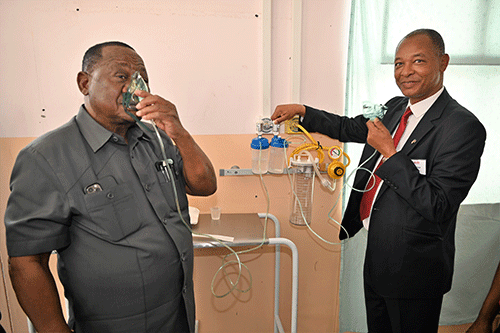Health minister Dr Kalumbi Shangula says the country is at risk of diseases, with the latest development and re-surfacing of 54 cases of H1N1 being confirmed mainly in Otjozondjupa, Khomas and Kavango East regions.
It seems most of the diseases ravaging the country have been due to hygiene elements, indicating government and citizens at large need to improve sanitation.
In the past five years, Namibians have felt the wrath of the Hepatitis E virus since December 2017.
Cases have significantly dropped in all regions since the last quarter of 2020, with only a few cases reported in Windhoek, Walvis Bay and Okahao districts, eventually ending the outbreak in March 2022.
The good news that Hepatitis E has ended unfortunately came with bad news with the detection of typhoid, a life-threatening fever caused by the bacterium Salmonella Typhi, usually spread through contaminated food or water.
On all of these occasions, Shangula urges the public “to maintain good hygiene and sanitation, including handwashing, ensuring drinking safe water or boiling water before consumption”.
Shangula made these observations at the handover of a pressure swing absorption (PSA) oxygen-generating plant to the Onandjokwe intermediate hospital last week.
In the past five years, Namibia, apart from the usual TB, HIV, diabetes, malaria and rabies, has experienced attacks from Covid-19, scabies, Hepatitis B and now seasonal H1N1 influenza – again signifying the need to maintain personal hygiene.
The upgrade was funded by USAID as part of the US government’s US$20 million (N$363 million) support package to mitigate the impact of Covid-19 in Namibia – and it is part of America’s global programme to expand worldwide access to medical oxygen.
Shangula further added government has and will try its level best with developing partners and relevant stakeholders to mitigate the impact of diseases in the country by providing much-needed medical equipment and improve on service delivery.
“This is an important step in our journey to strengthen our health care system, improve service delivery to make our country a better place, so that those who need health care are able to receive it without having to travel long distances,” he stated.
Onandjokwe hospital was one of the key battlefields in the fight against this deadly disease while carrying out other activities, such as risk communication and community engagement, disease surveillance and other interventions that formed part of the national Covid-19 preparedness and response plan.
“This infrastructure is part of the investments made to strengthen our capacity to deal with health emergencies. The existing oxygen-generating plant at Onandjokwe intermediate hospital has the capacity to generate 200 litres of oxygen per minute,” he stated.
This plant is, so far, the largest of its kind in the country in terms of capacity to produce medical oxygen, as it has three components.
It will deliver about 1 300 litres of oxygen per minute, which is more than enough for the hospital’s consumption.
The second component is the vacuum or suction system, which is a critical component in the care of critically ill patients.
The third component is the generation of medical air, which is critical in the management of very sick patients, as well as those undergoing theatre operations.
-psiririka@nepc.com.na


